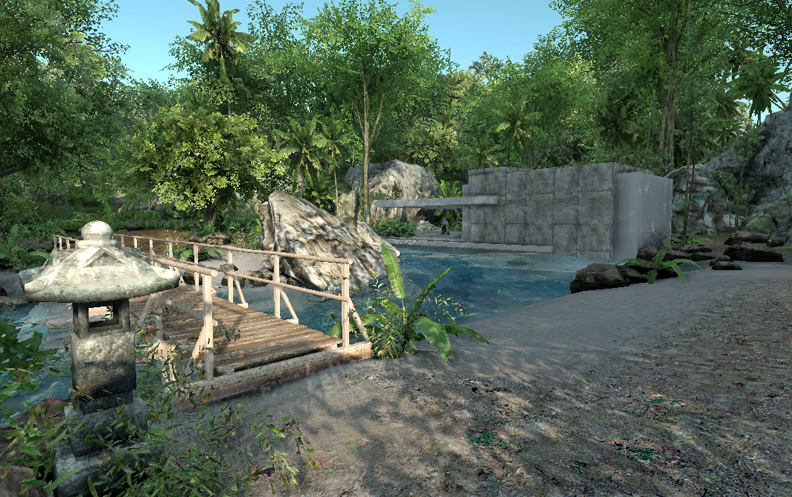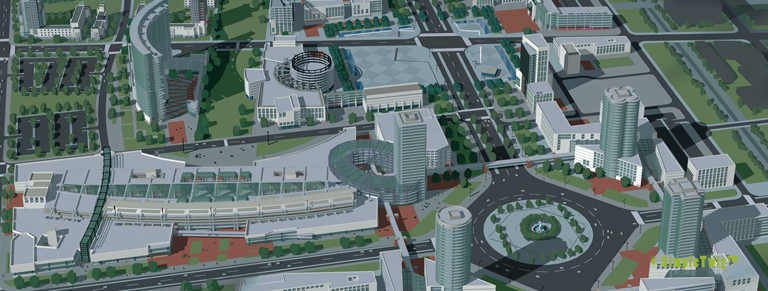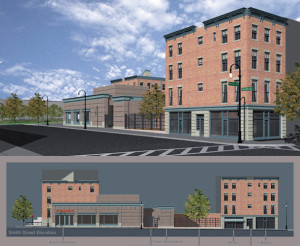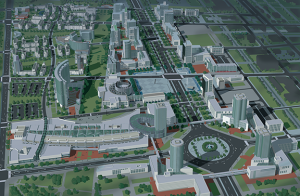It’s long overdue, that is, the re-design of our urban fabric. What we have today stems from century old thinking and technology as well as the notion of building only what is required for today. In fact we continue this practice today with few master plan examples having any real effect on the daily lives of so many. The result is a highly inefficient system that is expensive to maintain, thus crippling our government’s ability to fulfill our needs.
Here it is all laid out: We build lots of roads. These roads help commerce but are a burden to maintain. Under these roads we place services that periodically we need access to, thus we tear up our roads and on top of their own maintenance we have to repave them again. The time and effort to reach our services is also very inefficient.
We build roads to allow us to park, but it in effect covers our land with payment lowering the quality of living for everyone. The smell, the sight of vehicles and the occupation of what could be recreational space with more cars. We cover our land with pavement and thus can not plant trees or have grass… it makes our cities hotter and lowers our quality of life.
We build flat roofs which reflect or absorb the sun. They are lifeless zones and along with our roads creates a very inhospitable place. We are humans and thus a product of nature. We need the rest of nature around us in order to be balanced life forms. Zoning to guarantee light, air and minimum quality of life standards is only a first step. Those zoning steps were taken over 100 years ago. Do you think we can build on that?
While the above is a result of immediate needs, if we took the time to plan something different that incorporates efficiency, we would be building efficiently, cost effectively and infusing our built environment with something that could be very easily maintained. The difference between today and 100 years ago is that now we do have the equipment and materials to make something that is beautiful, a pleasure to live in, a place that embraces the outdoor world, a world that incorporates vehicles without sacrificing land and the natural environment, a place for our children to play and a place where utilities can easily maintain their services effectively, efficiently and quickly.
It all starts with a city block and I am referring to the typical residential city block typically occupied by townhouses and low rise buildings. The unit of all major cities which occupies the most land.
Within all city blocks are hierarchical relationships of public commercial zones versus more private quiet residential zones.
Within all urban blocks are a variety of people who want a variety of things in their life, many times depending on their age, status, goals, life-style, attitudes. One thing is for sure in America is that we celebrate this variety but we don’t always incorporate it. The reason I like my particular neighborhood today is because of it’s variety, but it is an accidental thing. It’s time we incorporate this variety into the buildings we create so that all people will find their place within the whole, as it should be.
The city block looking at itself as a solution to city wide problems. That’s a new thing and one that can easily be zoned for. To move into the future with smart thinking by incorporating the needs of today and the needs of the future. To make components easy to change, to fix, to replace. To make movement safe yet enjoyable. To embrace experience of one’s progression into the design. It’s all very complex and thus hard for people to understand and appreciate, but it’s something that needs to be done. In effect we could make a block that is as complex yet self sustaining as our human bodies are to us. And in this way it is that simple. Self-sufficient, sustaining, low cost yet effective, mass produced yet varied and full of surprises and experience, uniform yet varied, high density yet green and private.
Can it be done? That’s what I’ve been working on for 20 years… it’s about time I start doing the type of diagrams that explain how it would work. The diagrams would explain only one single aspect of the project and how that aspect is the right thing to do. In the end the challenge would be to incorporate all the aspects into a well thought out hierarchical prototype.
The diagrams, how would you describe them again? Lets look at the human as an example: I draw a diagram of the human eye and tell you how it works and how it looks. It explains only one function of the human, but I haven’t told you where that ‘eye’ would go on the human form and in fact I don’t even know what the human form looks like. I continue with other diagrams, the heart, the brain, the liver, the stomach, etc. After I’ve assembled all the diagrams I start to arrange them hierarchically, and adjust their sizes until I have them in the best possible positions. After this, I ‘tie’ them together the way our bones and skin tie our human composition together. Yes it is all very complex and as we all know the Human form is constantly being studied and new information about it is continually being discovered, yet with a built environment the effort isn’t as complex. The analogy is a solid one though as it helps keep this goal on track to produce the best possible result.



